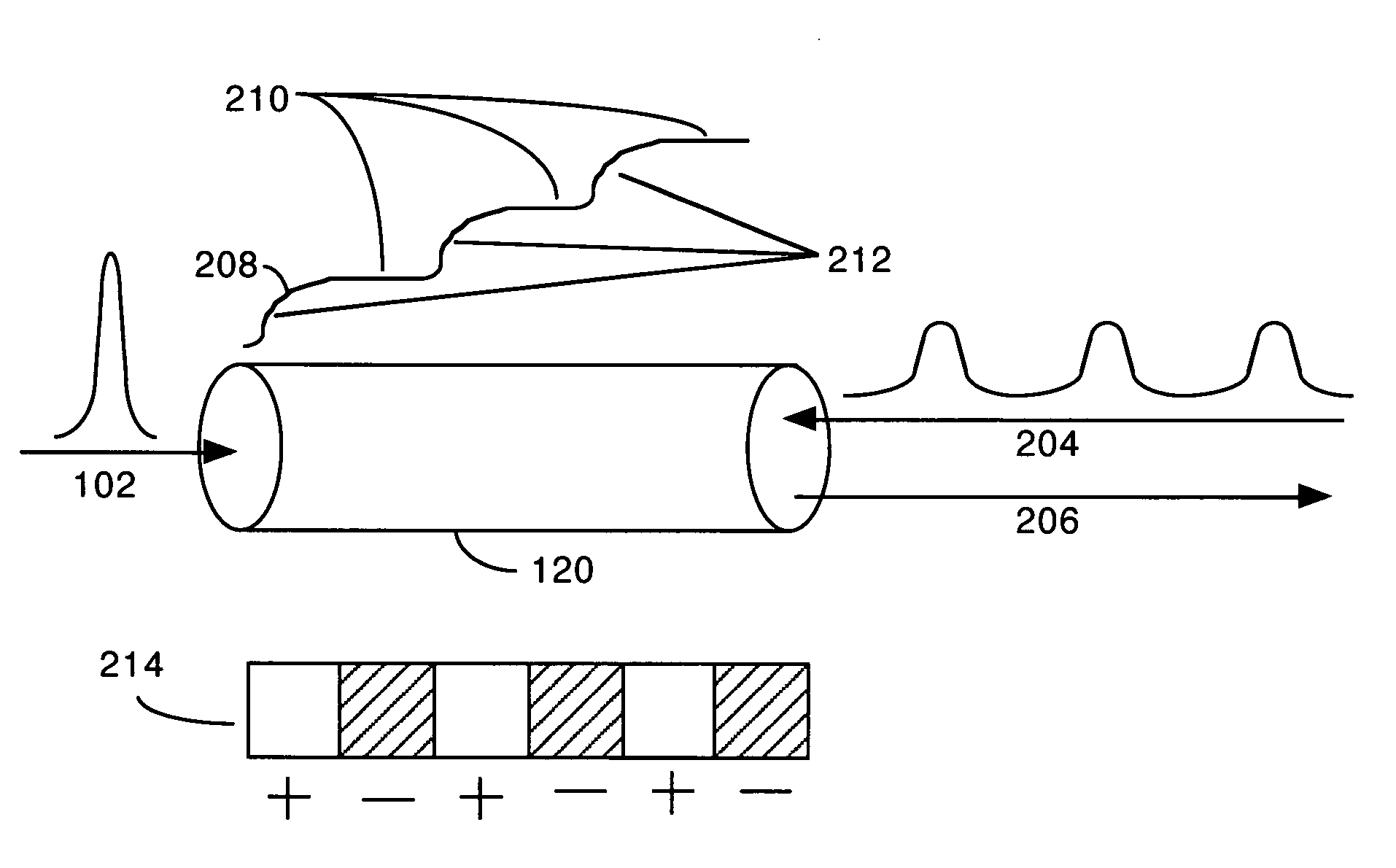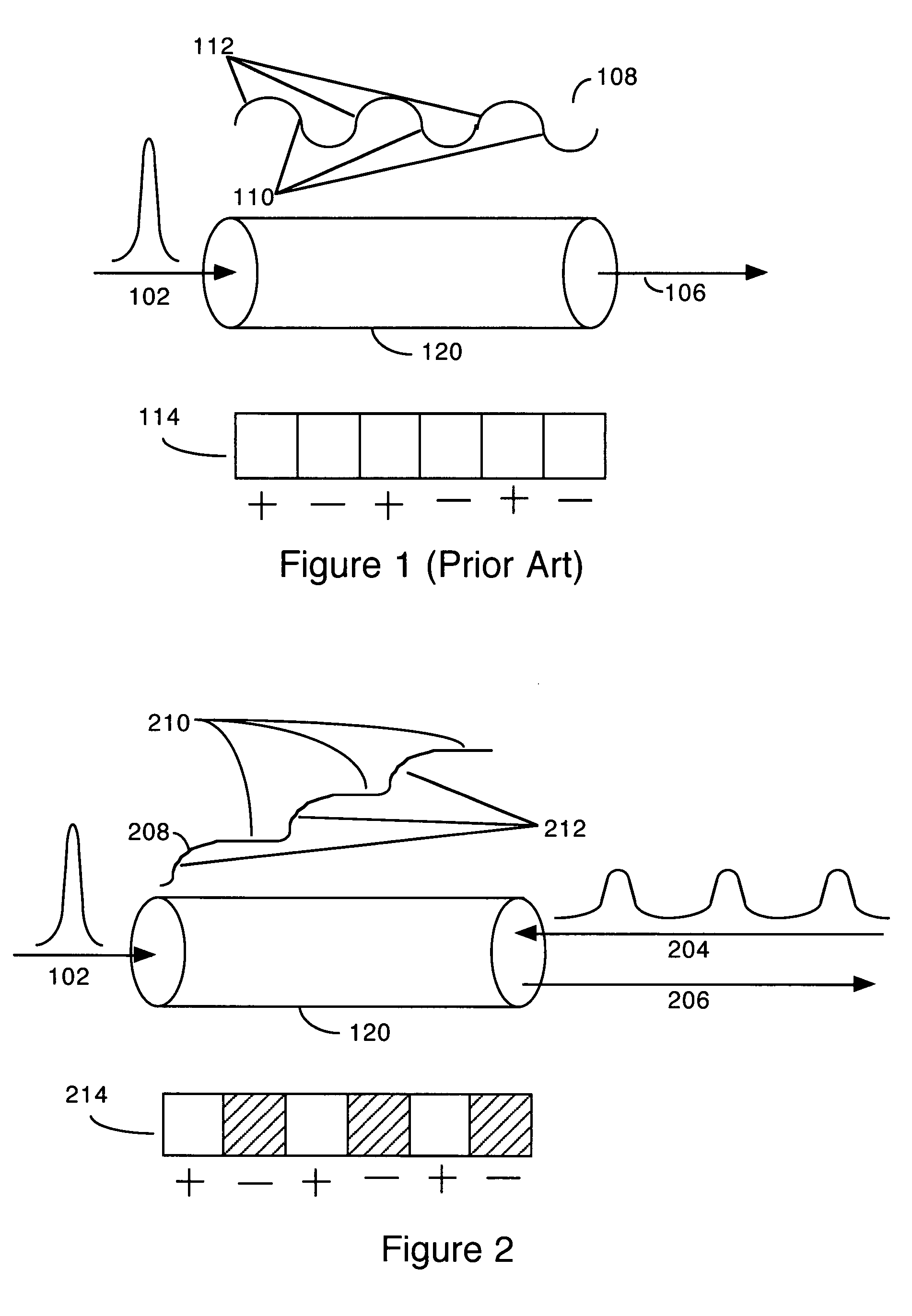Quasi-phase matching and quantum control of high harmonic generation in waveguides using counterpropagating beams
a quantum control and waveguide technology, applied in the direction of laser using scattering effects, electrical apparatus, laser details, etc., can solve the problems of significant modulation in both amplitude and phase of harmonics, inability to use hhg, and difficulty in optimizing the modulation period, so as to enhance high-harmonic emission
- Summary
- Abstract
- Description
- Claims
- Application Information
AI Technical Summary
Benefits of technology
Problems solved by technology
Method used
Image
Examples
Embodiment Construction
[0026]FIG. 1 (Prior Art) is a schematic diagram illustrating high-harmonic emission generation (HHG) in a waveguide where the process is not phase-matched, and without quasi-phase matching. Input pulse 102 comprises a femtosecond laser pulse, which enters hollow waveguide 120. Signal waveform 108 gives a general indication of the amplitude of HHG over the path length of pulse 102 through waveguide 120. Diagram 114 indicates the regions within waveguide 120 in which constructive and destructive interference of HHG emissions will occur, due to the short coherence length of the HHG beam. The areas indicated by a plus (+) are areas of constructive interference, while the areas indicated by a minus (−) are areas of destructive interference. The length of the plus and minus areas is exactly one coherence length.
[0027]Hence, at first the HHG amplitude increases, but as the coherence length is reached destructive interference causes the amplitude to decrease. This process is repeated with a...
PUM
 Login to View More
Login to View More Abstract
Description
Claims
Application Information
 Login to View More
Login to View More - R&D
- Intellectual Property
- Life Sciences
- Materials
- Tech Scout
- Unparalleled Data Quality
- Higher Quality Content
- 60% Fewer Hallucinations
Browse by: Latest US Patents, China's latest patents, Technical Efficacy Thesaurus, Application Domain, Technology Topic, Popular Technical Reports.
© 2025 PatSnap. All rights reserved.Legal|Privacy policy|Modern Slavery Act Transparency Statement|Sitemap|About US| Contact US: help@patsnap.com



